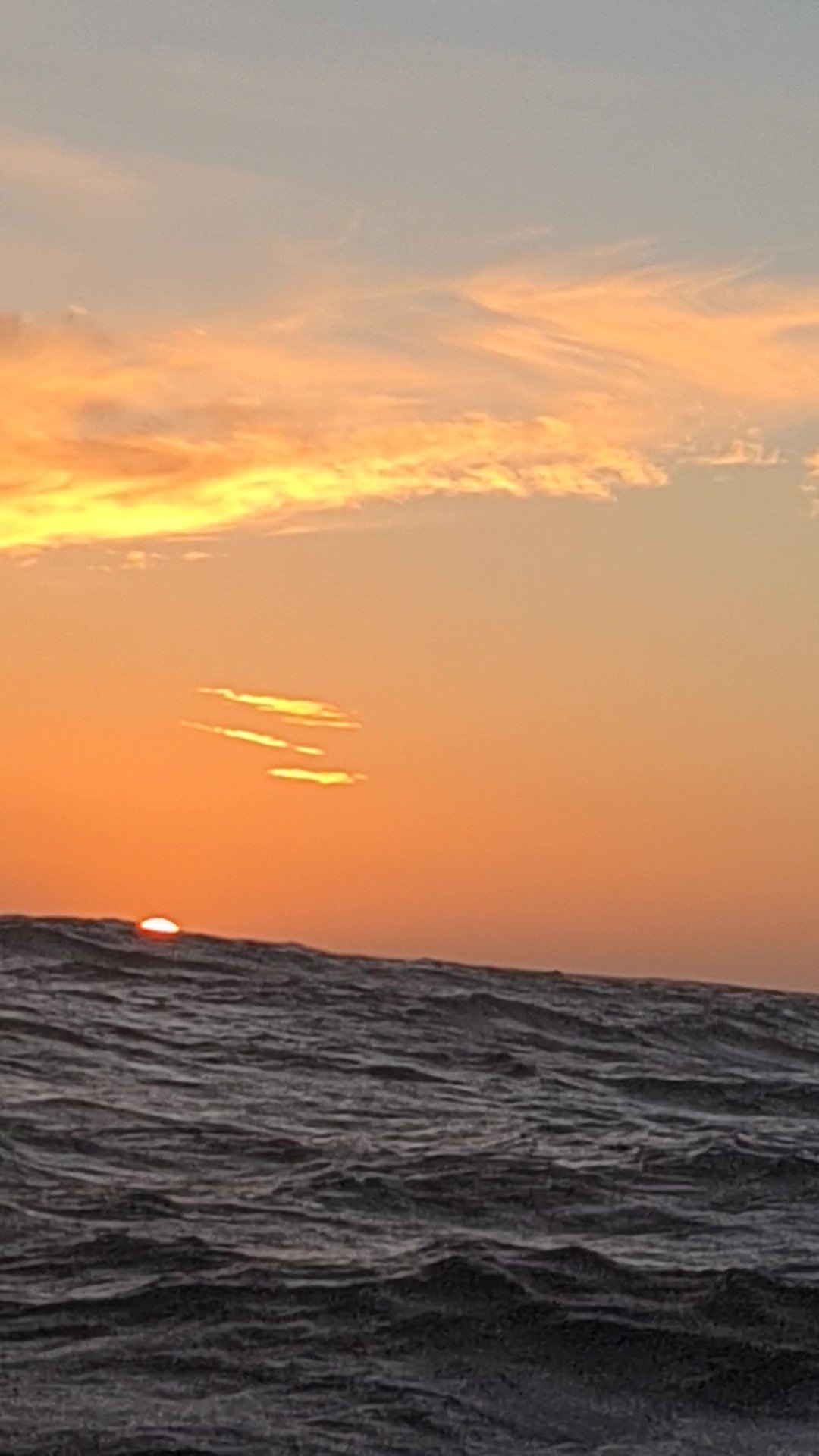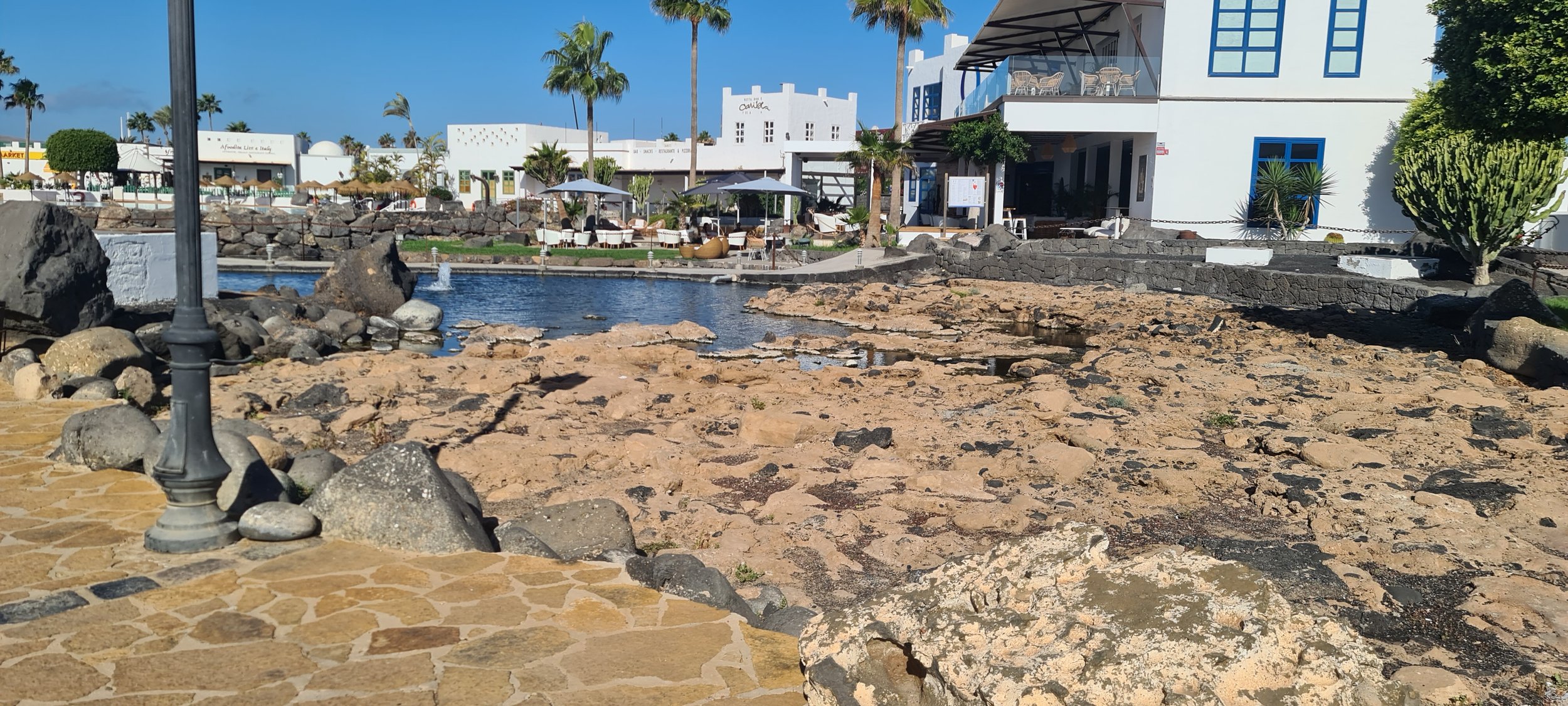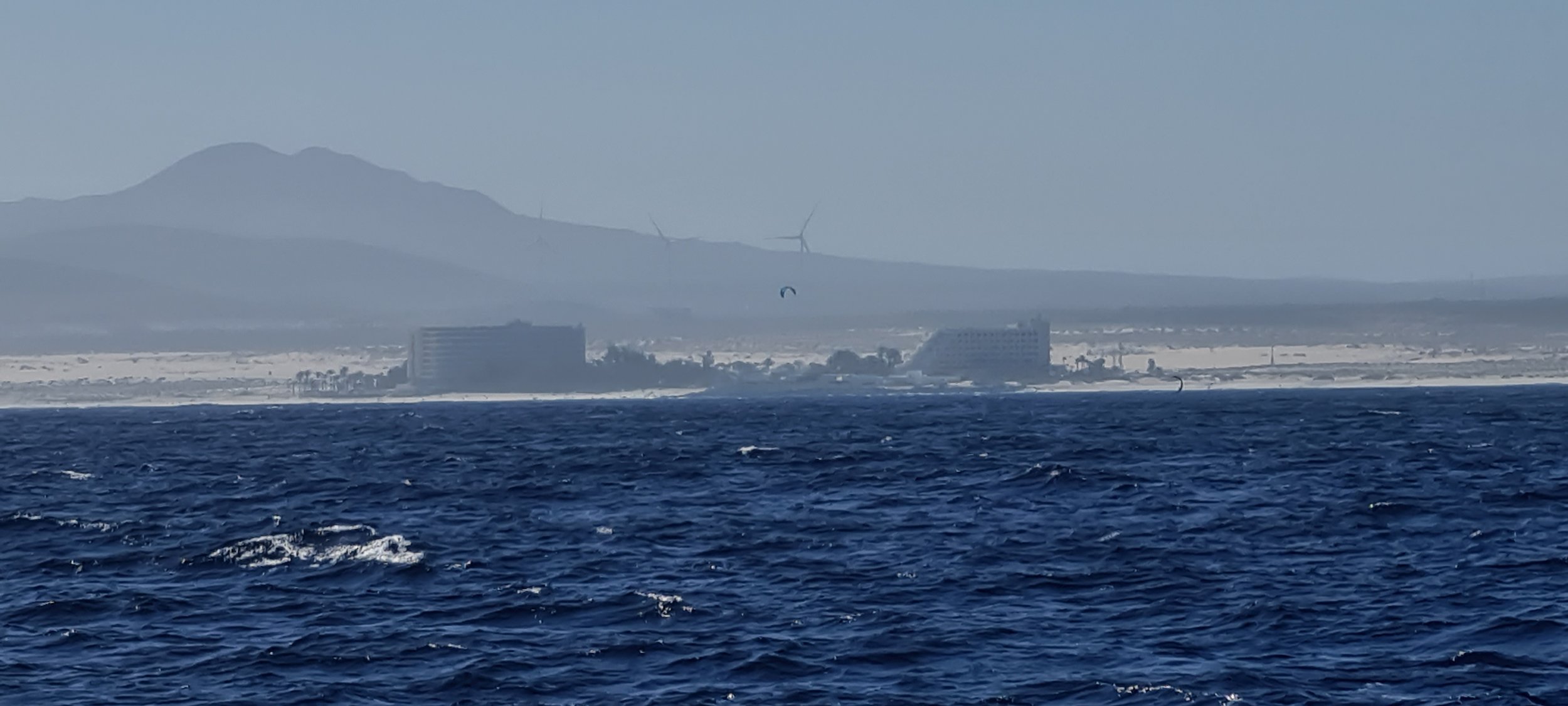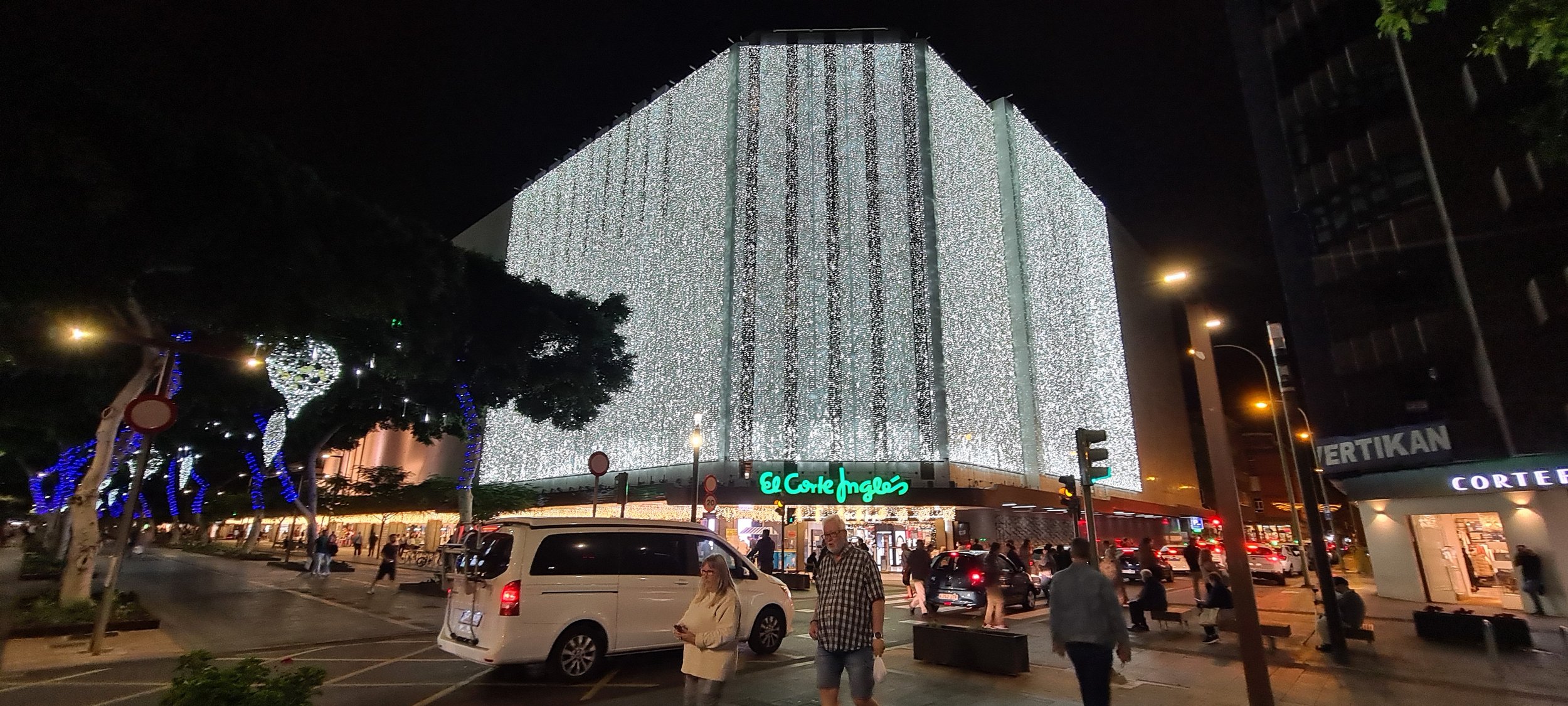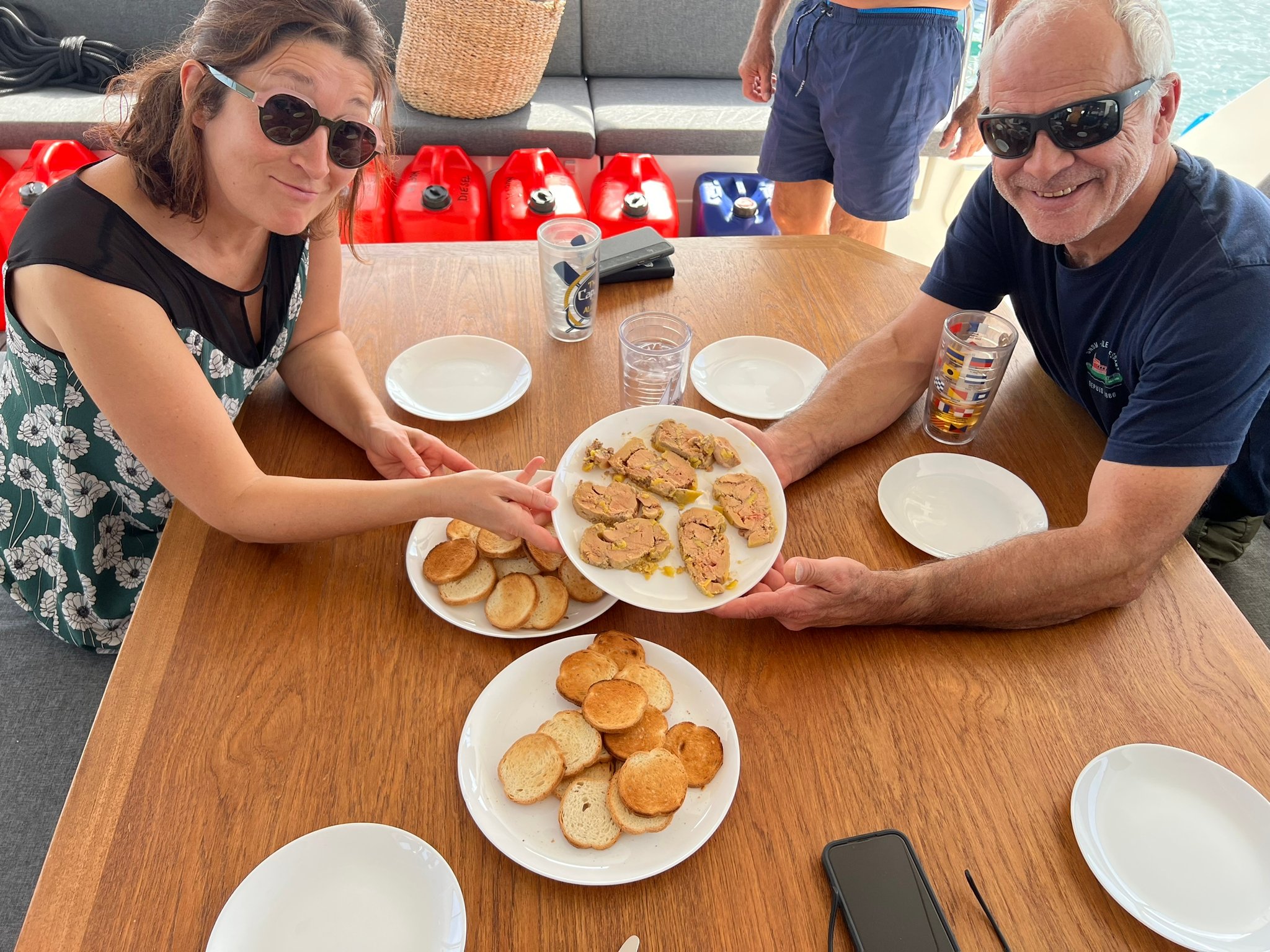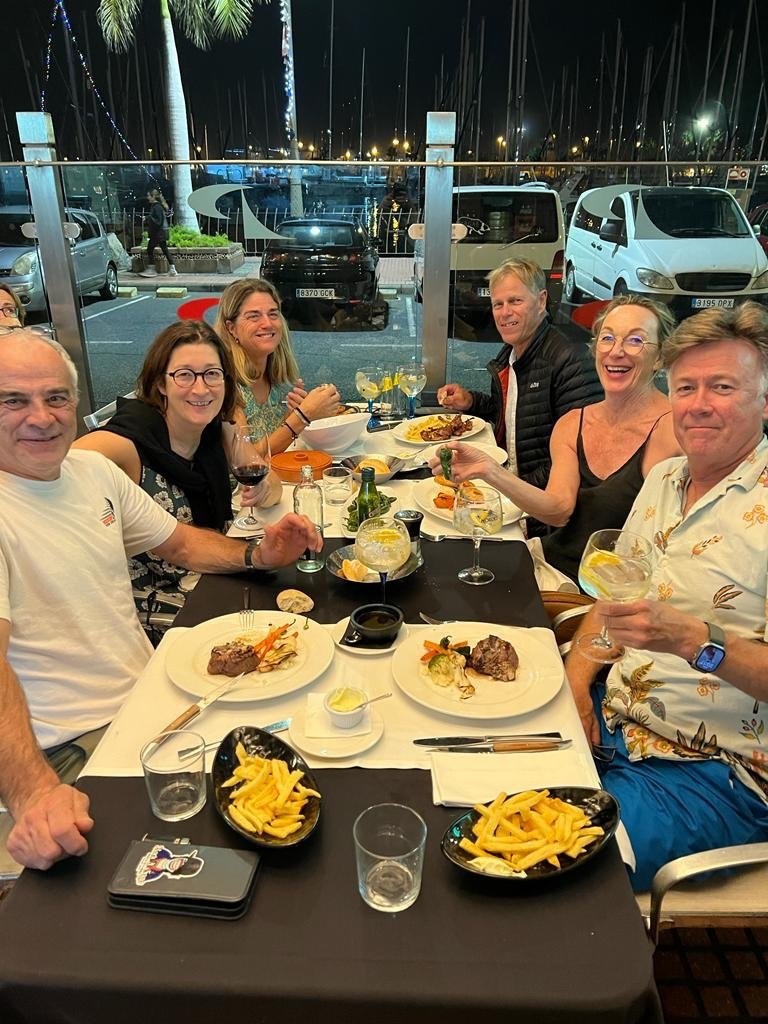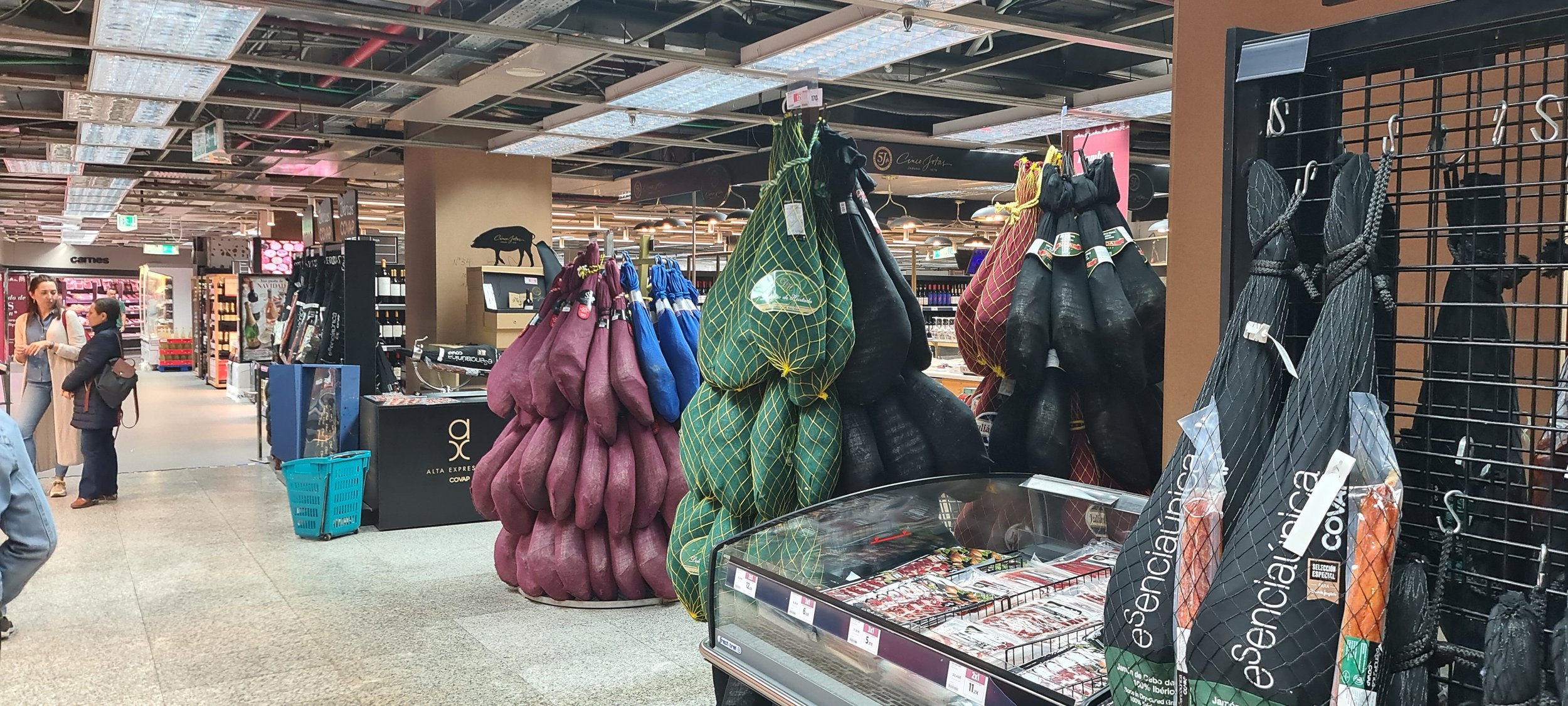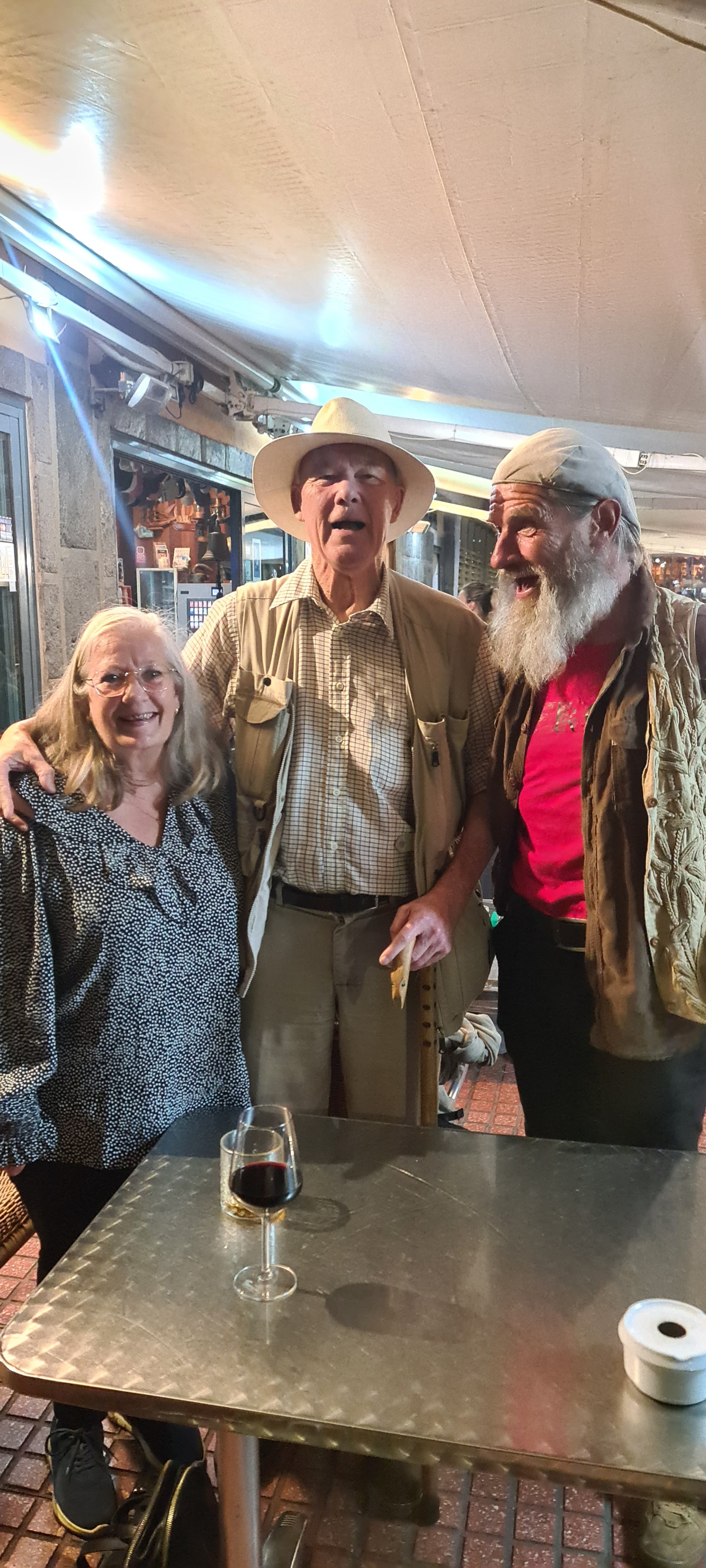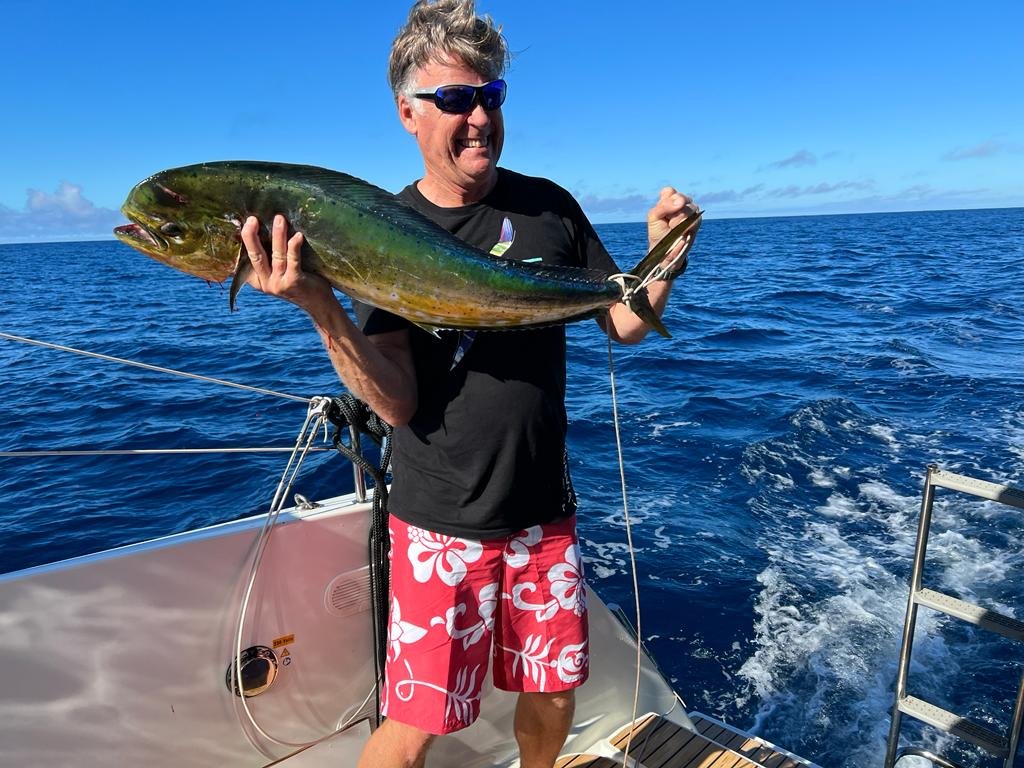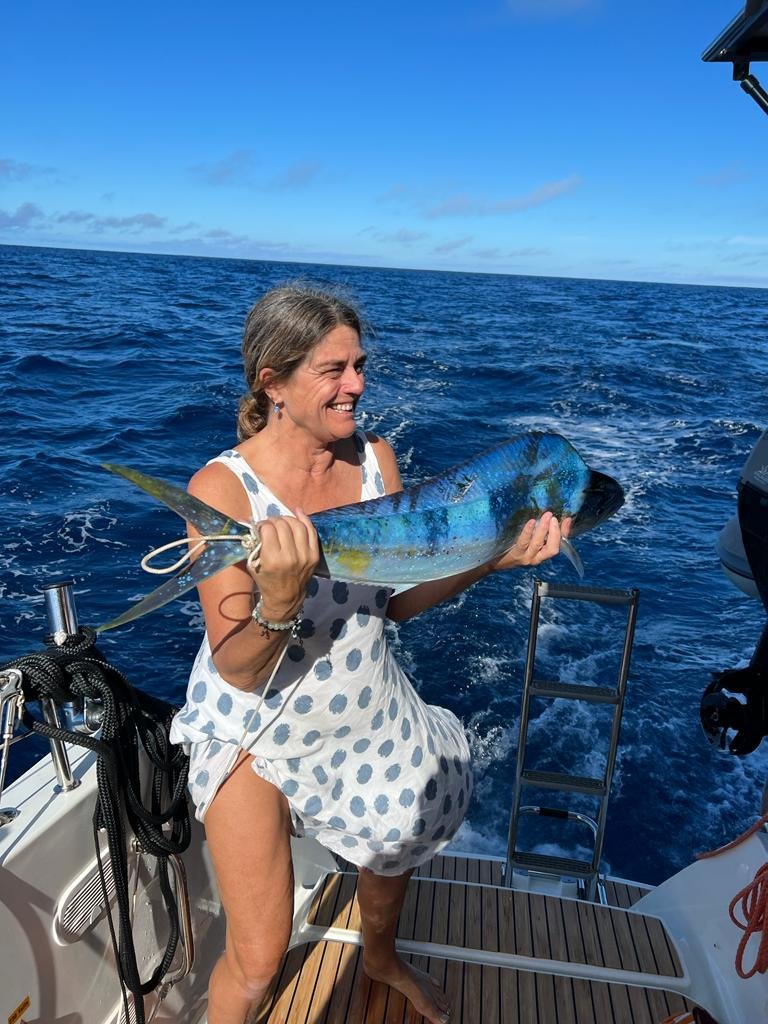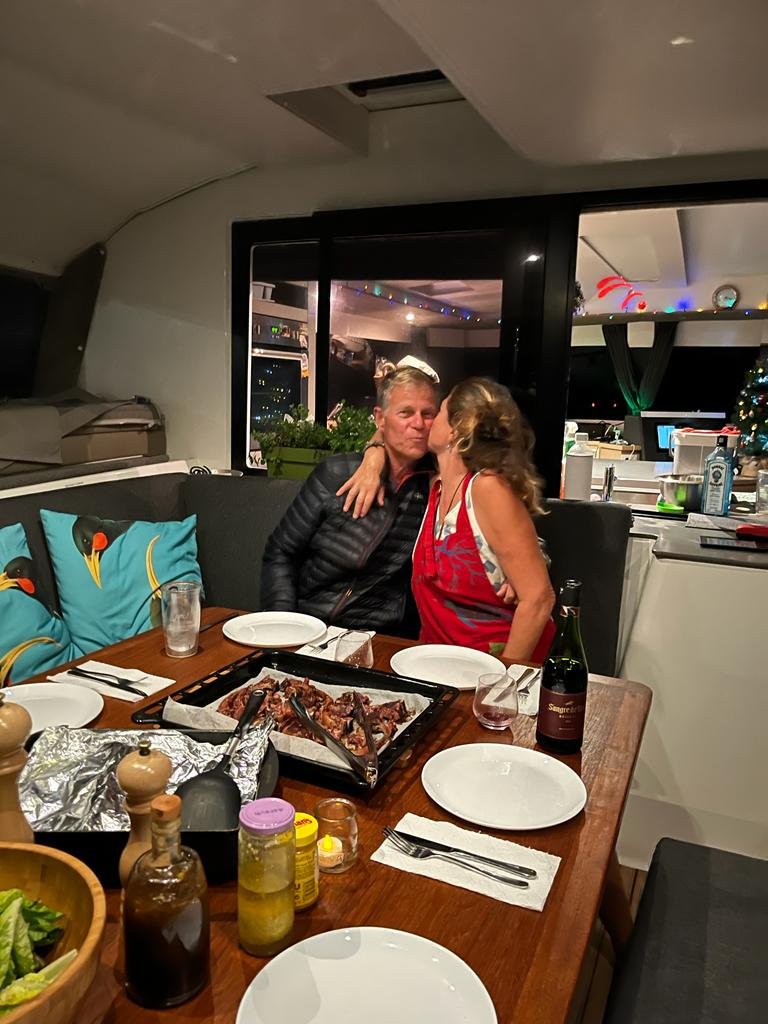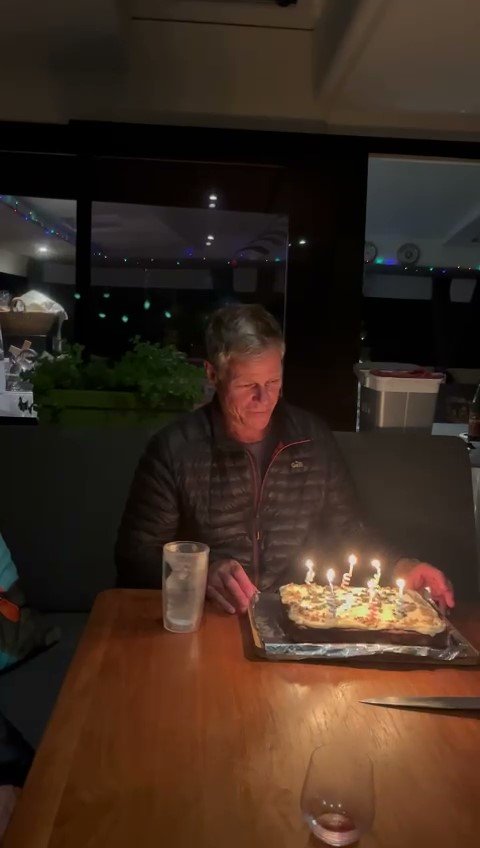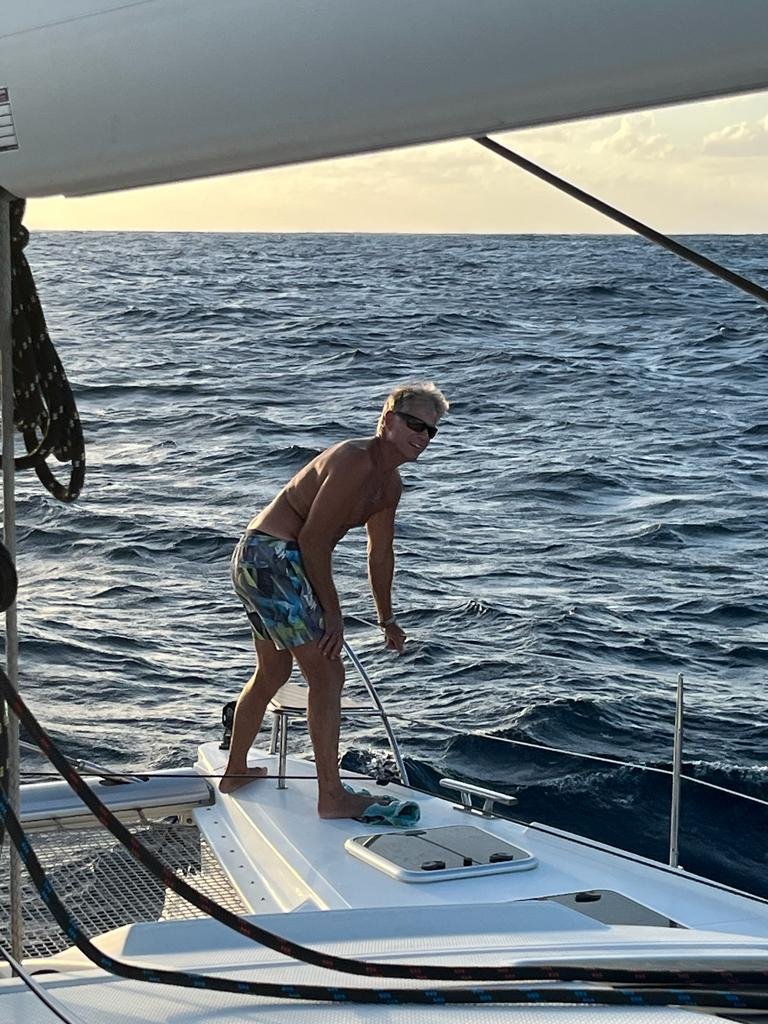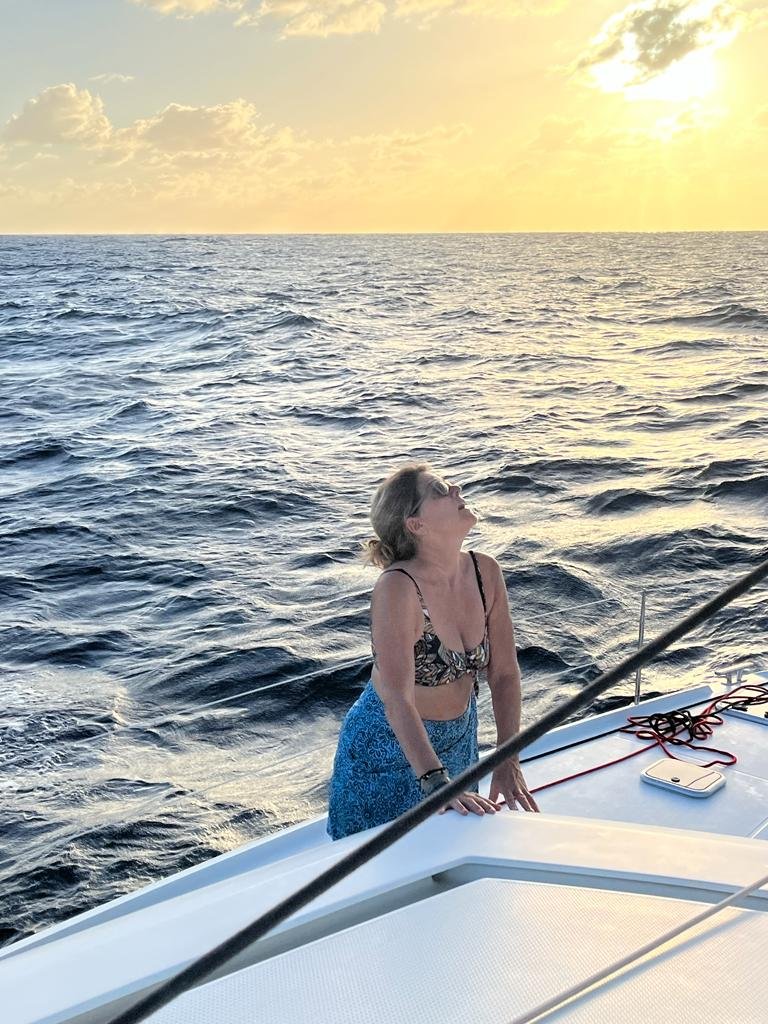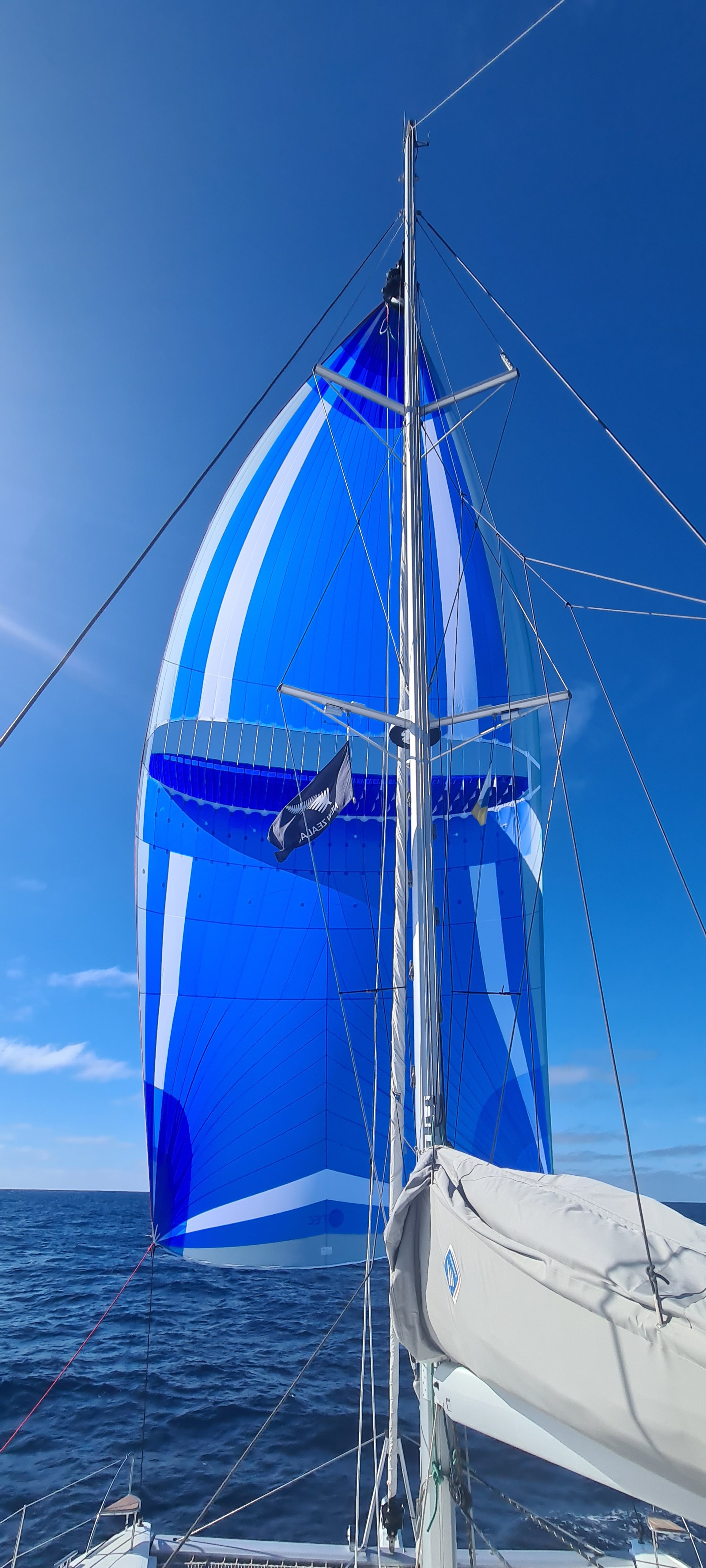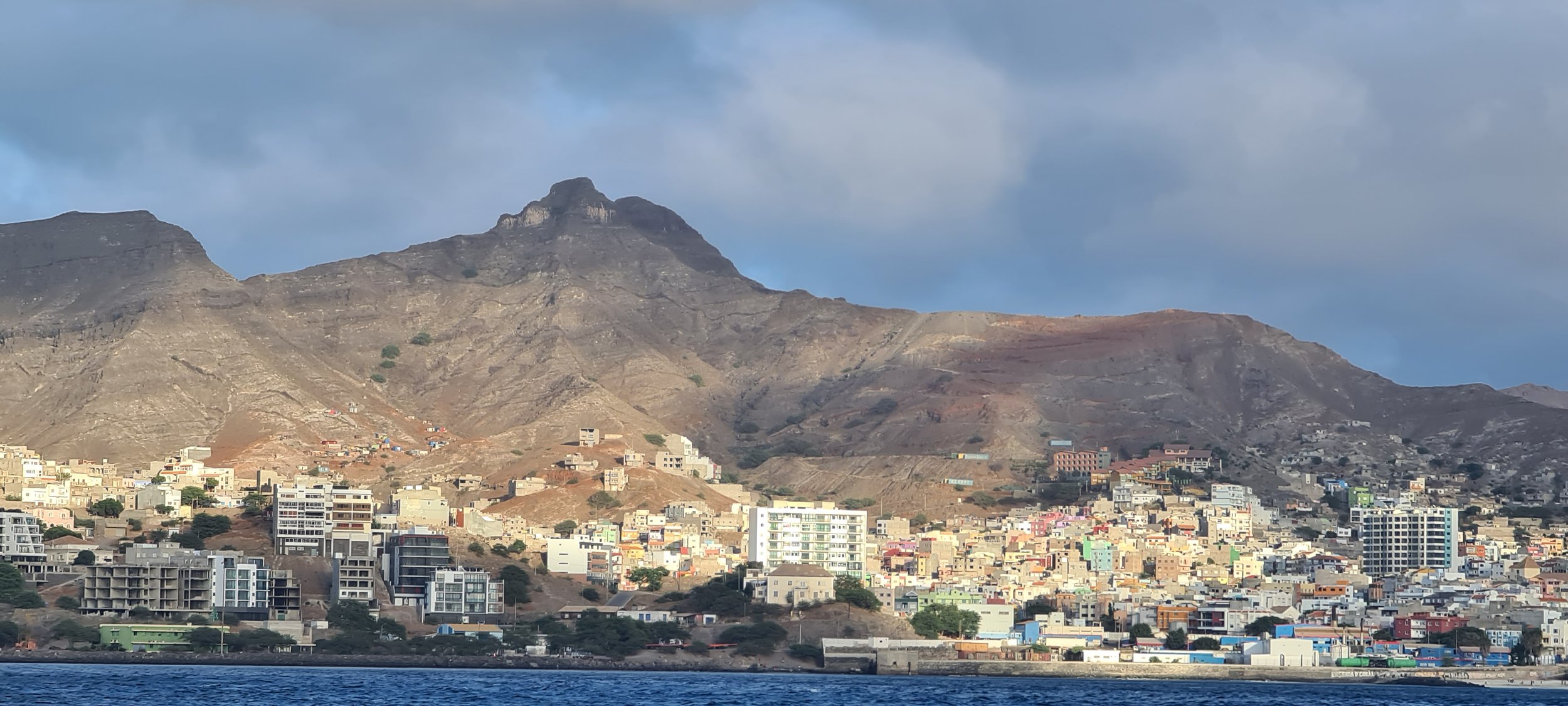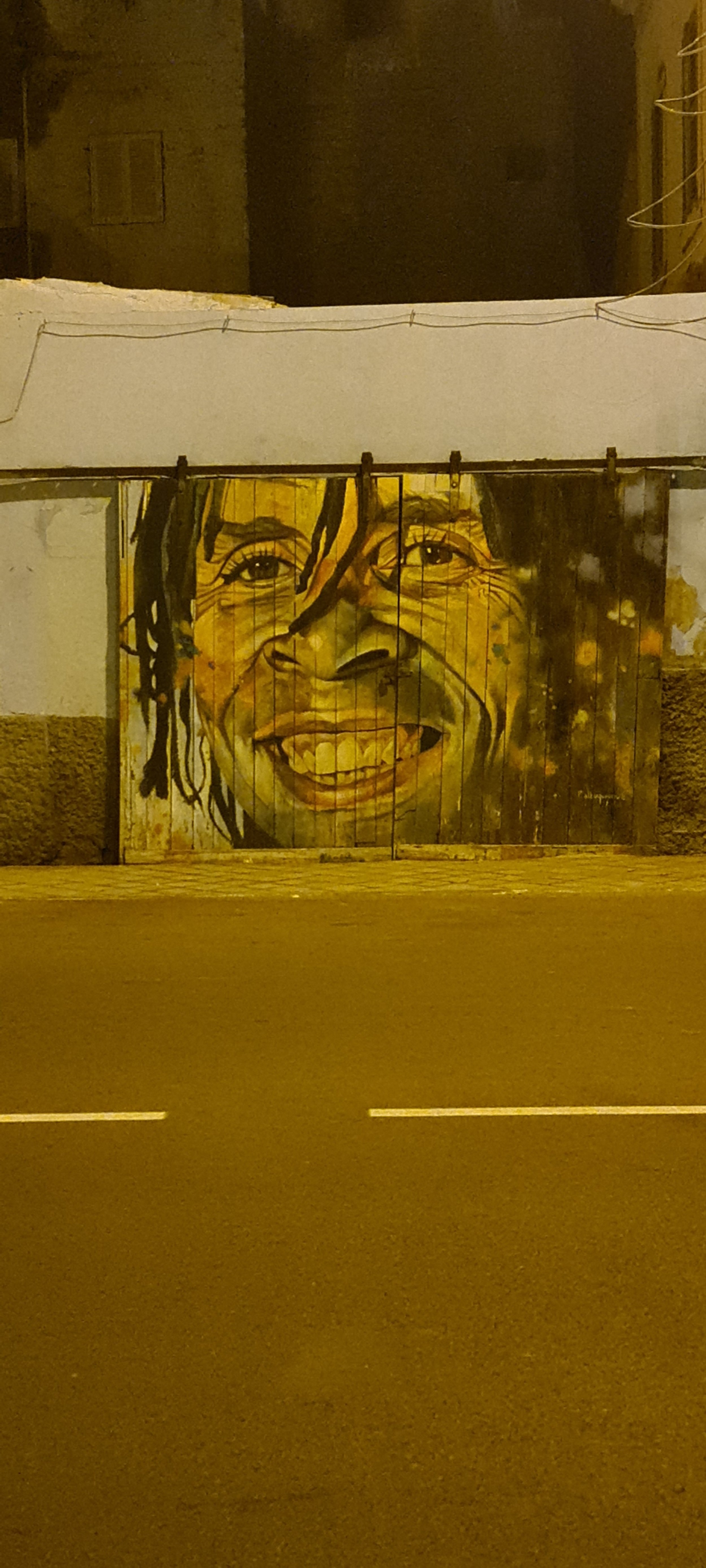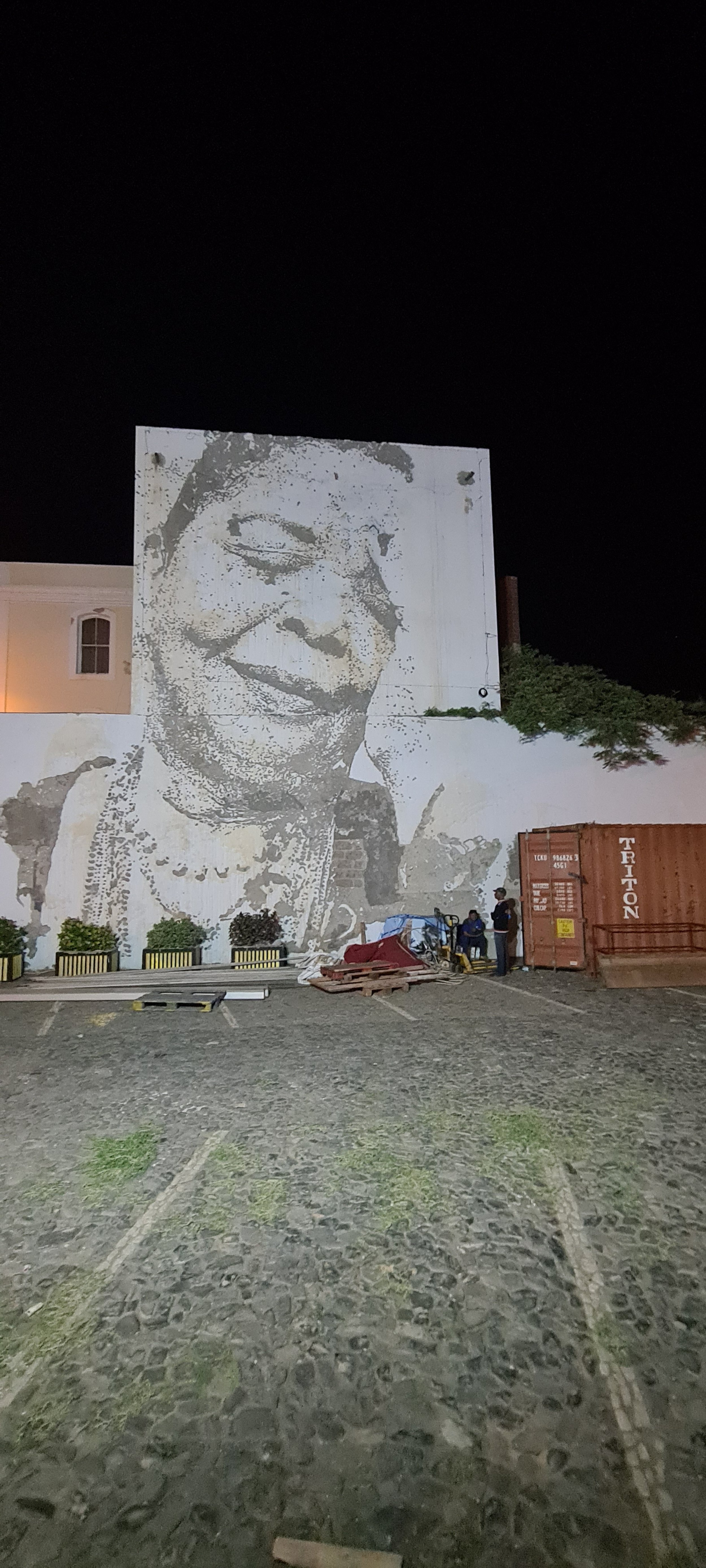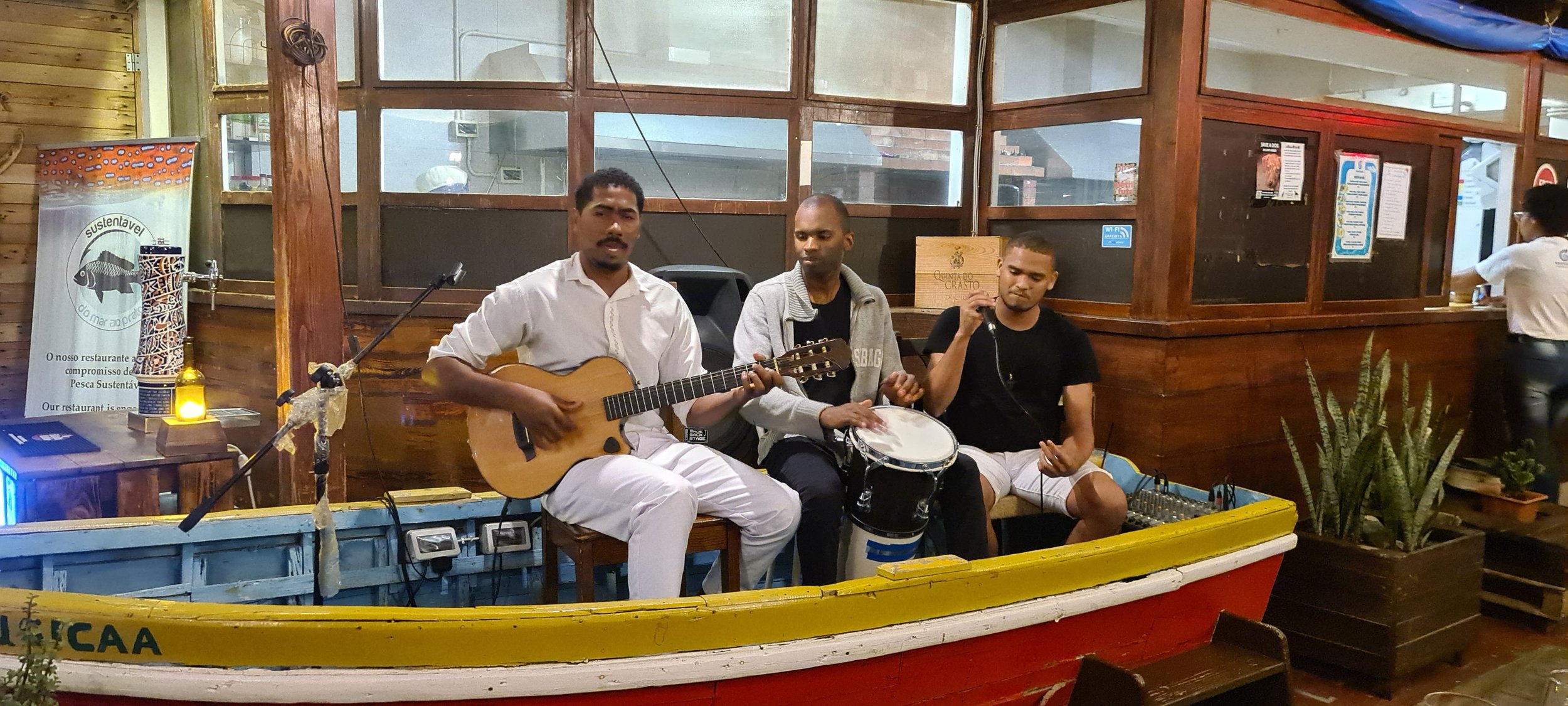Canary Islands & Cape Verde
We left Gibraltar on November 23rd and it took us three and a half days to get to the Canary Islands, a very popular place for last minute repairs and fresh provisioning before crossing the Atlantic. And because we knew diesel was cheaper in Gib we filled up our two 450 L diesel tanks plus 20 x 22 L drums, before slowly heading out through the Straits. There is always an easterly current, the Mediterranean is one metre lower than the Atlantic and when this is combined with tidal flow and current from westerly storms, well it was slow going. So against a four knot current, hugging the coast to Tarifa, we managed a speed of four knots for several hours, at least the predicted 25 knot westerly wind only got to ten knots. Southeast from Tarifa, past Tangiers and down the Moroccan coast, we kept 50 nm offshore to avoid fishing nets, and most of the way had a good northeast tailwind with some swell from the northwest. The swell height reached 12 metres on the first day, right on our beam, but the crests were far enough apart that the drinks didn’t spill. We started out with four hourly watches, Skip, first mate and Gregg/Maggie but when the autopilot started shutting down on the first day we revised our rota and by day three we were all sharing helm duty, hour about. Luckily we had purchased all the components for a backup autopilot system and although it was impossible to install at sea, Skip and Gregg diagnosed the problem and devised a plan of execution for when we got to dry land. We did manage to get the genoa up on the first two days but because of the autopilot didn’t risk the parasail. Even so averaging 7.1 knots we managed a respectable 604 nautical miles in just over three days (85 hours), not bad considering our autopilot issues and the two 360 degree turns I perfected.
The Canary Islands (Spanish Islas Canarias) commonly called the Canaries, are comprised of seven main islands and a number of smaller islands and islets. Lying a scant 54 nautical miles from Morocco, their location links the continents of Africa, Europe, and North and South America.
The name derives from either the Latin Canariae Insulae, meaning "Islands of the Dogs" or from a Berber tribe called the Canarii as not only were vast numbers of dogs (or monk seals) reportedly there at one time but it is also thought that the islands were settled several thousand years ago by people from North Africa; sadly annihilated in the 15th century by the Spanish. And the native canary bird Serinus canaria - it is named after the islands.
We made landfall in Lanzarote, population 154,915. It is never ideal to arrive in the dark and at an unknown anchorage but needs must. Our Airalo SIM had kicked in so were able to use Navily to identify anchorages - Los Topetes looked OK but on approach was too deep and rocky, further south at Playa de la Concha it was shallow and sandy, perfect. After a brief sleep we woke up to another world - white houses set against barren brown hills with mist shrouded volcanoes behind - stark, eerie, and beautiful. Wanting an anchorage closer to amenities we headed south to the bottom of the island for some great snorkelling and tapas. The Canary damselfish (Similiparma lurida) has electric blue fins, the tapas and local white wine at La Taberna were delicious, and Skip and Gregg installed the new autopilot motor. Lanzarote is an incredibly special place, in part due to its natural geography, but also through the extraordinary vision and passion of artist, planner, designer and conservationist César Manrique. Manrique, determined to not to let his homeland succumb to visual pollution, managed to stop the erection of billboards, overhead powerlines, high rise buildings and instigated a house colour policy. All houses to be painted white with inland facing green shutters and sea facing blue. We were there for such a short time so didn’t get a chance to see any of Manrique’s many artistic creations or the Timanfaya National Park, a moonscape of shape and colour, or the unique viticulture, vines planted in pits “hoyos” with stone walls for protection, all we saw was small volcanoes, scoria gardens and cacti. But interestingly the proliferation of cacti is due to the once thriving cochineal industry, cacti imported in the 19th century to farm the cochineal beetle, a sunset industry.
Heading south to Gran Canaria, we passed Los Lobos, uninhabited but once the site of Roman snail harvesting for the highly prized Tyrian purple dye. I wondered about the name, thinking there might be some wolf reference, but in fact the Spanish name for the monk seal is Lobos Marineros - what is it about these islands – monk seals and natural dyes. Then Feurteventura, population 122,526, a coastline of imposing cliffs, the occasional valleyed village, then massive resorts standing in isolation on long sandy beaches, backed by barren volcanic hills, lots of kite surfers but unfortunately very few sheltered bays for us to anchor in.
Finally Gran Canaria, population 876,200 and the capital Las Palmas, population 86,451. Las Palmas was bigger than expected, but not surprising given it is the eighth largest city in Spain. With the ARC (Atlantic Rally for Cruisers) having departed several weeks before there was plenty of room to anchor with other yachts between the large busy port with oil rig ships and cruise ships and the main city beach. Golden brown and groomed daily, the beach was near empty, silent volleyball courts and a small traveller’s tent town, quite odd. Although some nights the noisy port and rolling swells did not make for restful sleep, it was close to town and our mates Connie & Greg on Waiata. After being told off for tying up TENDER at Club Nautico we settled for La Marina which fortunately was also where we could check in and out of Spain, but unfortunately for the girls meant a good two km walk along the promenade, past the beach, to town and provisioning - not such an issue for the boys, as the chandleries and Sailors Bar were a mere stone’s throw. Our first night we wandered along the Christmas lit main street and dark side streets to a barbequed tapas dinner, then the rest of the week, it was chez NOETA or the Sailors Bar, simple Spanish fare, sidewalk tables, large gin and tonics and a very chilled atmosphere. Our French crew, Dom and Anita, arrived on December 3rd bringing homemade foie gras, what a treat and we then spent the rest of the week, finishing up the provisioning, getting our satcomms sorted and attending to all those last boat fix jobs. And again with the ARC gone, the shops were quiet but still reasonably stocked. El Corte Inglés was great for important items like jamon, Spanish red wine, and cheese, the covered markets for a selection of fresh fruit, vegetables, and meat.
We use windy.com for our daily weather reports, but for the big stuff, Predictwind is what you need, giving you weather, routing, and a GPS tracking page. I upped our subscription to Professional, purchased an Iridium GO Unlimited data plan to work with the Predictwind SIM Gregg had brought over from New Zealand and spent a couple of mornings watching Predictwind Youtube videos; not only were they were really helpful but because Predictwind is a New Zealand company, we spoke the same language!
Our last night was dinner at Sailors, chatting to a wonderful collection of adventurers – a Malawi school teacher, a Danish photographer, and an Austrian self-styled cosmic traveller, it felt good to be a part of the crazy sailing community. So on December 6th, after nine days in the Canaries, freezers, chilly bin, and fridges full, we were off down to Cape Verde needing to get further south to take advantage of the predicted easterly trade winds.
It took us five and a half days to get down to Cabo Verde with the six of us taking three hour rotational watches (Dom and Anita shared a watch). It worked well and meant we all got 12 hours between watches; a luxury to be able to do more than just eat and sleep.
For the first three days we had light southwest winds on the nose but we averaged 6.5 knots, mostly motoring, down the African coast, and saw a shark, a whale, had a swim, caught three dorado, and were joined by a pod of dolphins for a sundowner and then again at dawn for Skip’s birthday. Finally on day four, clocks back one hour, the wind turned to the east northeast, and we sped along at an average of 7.4 knots, spying more whales and dolphins, and tuna and dorado chasing schools (flocks?) of flying fish. Day six and the last, the wind picked up and we hoisted our big blue beautiful parasail (kite) and cruised into Mindelo before dark. 900 nautical miles in 129 hours, average speed 7 knots.
Colourful, chaotic, Portuguese African Mindelo, population 69,013, a town of beautiful old buildings, great street art and poverty. Unlike the Canaries, Cape Verde (Portuguese Cabo Verde) was uninhabited when it was discovered by the Portuguese in the 15th century, but quickly grew in population as its location played an important role in the African slave trade from the 16th to the 19th century. After abolition it focussed on using its geographical advantage to establish itself as a major shipping service provider with varied success looking at the tired infrastructure and number of wrecks in the harbour.
Only staying one night we were keen to stretch our sea legs so after finding a place to tie up TENDER we wandered ashore into darkness and what could have been a potentially dangerous area. A hasty backtrack saw us dining at the well-lit Nautilus on delicious grilled prawn kebabs and Portuguese vinho verde, followed by line dancing with the locals and a blissful sleep at anchor. Wanting to check into Portugal and always on the lookout for fresh produce, the next morning we traipsed along the waterfront and up into the old streets. We had no luck with the former and mixed results with the latter - the several very limited supermarkets had a small selection of wilting produce but the large open air market - so much choice, colour and chaos!
Finally fuelled up, this time paying in Eastern Caribbean dollars EC$, we departed for the Caribbean, it was December 12th just after midday.


